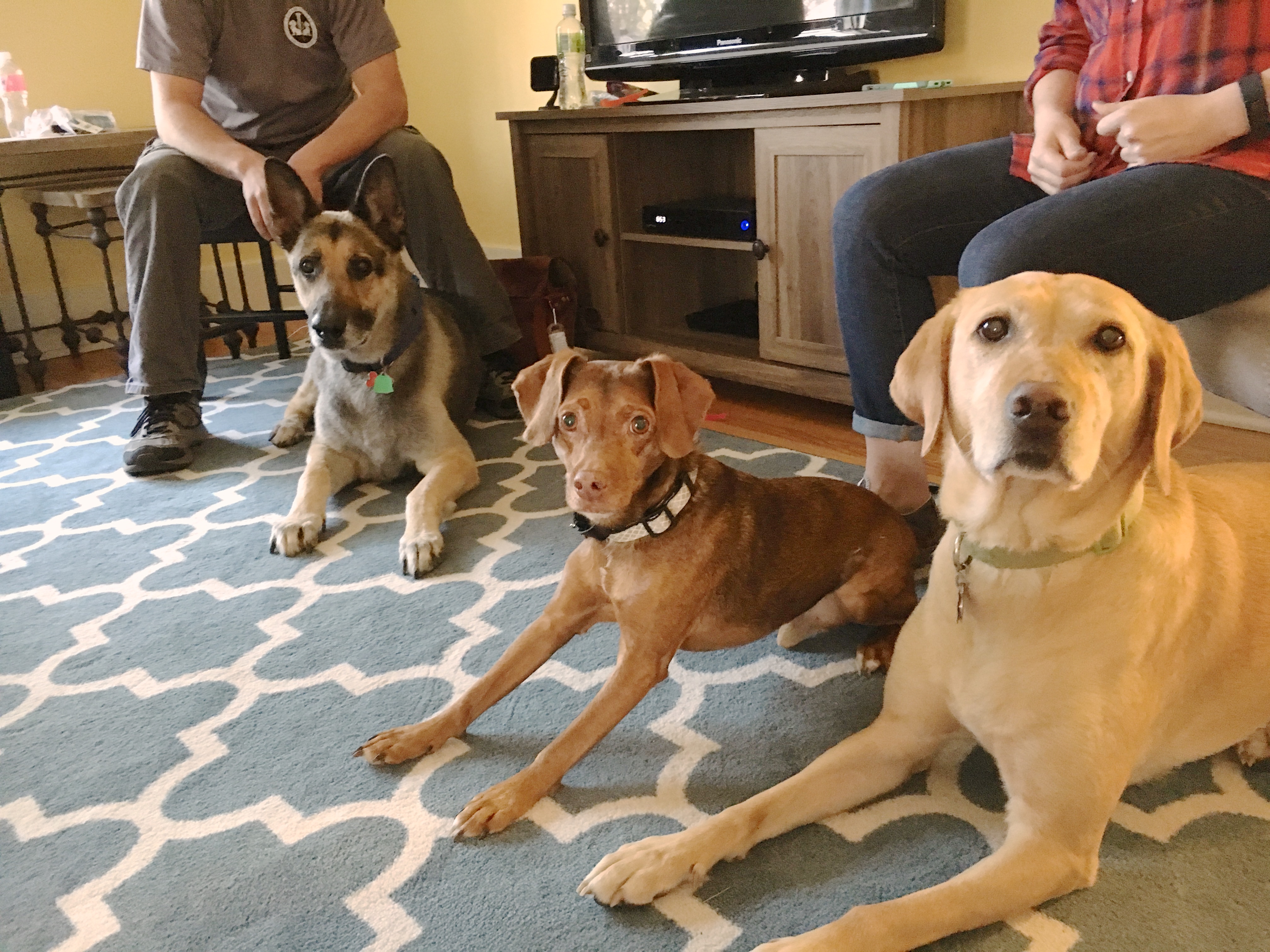Why Adding Rules and Structure Helped a Pack of Dogs Learn to Get Along
By: David Codr
Published Date: April 14, 2017
Chloe (right) is a five-year-old Yellow Lab who lives in Omaha. Her guardian watches her brother’s very nosy, ten-year-old German Shepherd Mac every other week. When Chloe’s guardian started bringing over her new BF and his Jack Russell mix Jack, Mac’s habit of sticking his nose in everyone’s business caused a few dust ups. The guardians set up a dog behavior training session to teach the dogs to respect personal space, build up their confidence and bring order to the pack.
Because Jack and Mac had gotten into a few dog fights, Jack was waiting outside with his guardian when I arrived for the session. As you can see in the video below, Mac shows no respect for space.
To dogs, distance can equal respect. Additionally when a dog wants to take something from another dog they are not friendly with, they invade personal space in an attempt to intimidate them.
Now in Mac’s case, that wasn’t the message he was trying to send. He just never learned that behavior was inappropriate. But now that their is another dog not familiar with his dynamic in the home, I knew we needed to do some behavior modification.
I started out going over how to provide all the dogs with structure through rules, boundaries and limits. While Mac is the dog most in need of help, all three dogs have behavior issues of one kind or another.
I recommended that everyone stop petting Mac unless he did something to earn his praise first. Asking a dog to sit or lay down first, then petting them after they comply (the first time) while simultaneously saying the command word helps the dog develop better social skills while also practicing some basic dog obedience.
After going over ways to add structure and communicate more effectively with Mac, I showed his guardians a few exercises to help him learn to focus. Once he had it down, we had Mac go out to the back yard so I could teach them to Jack.
Adding structure plus teaching Mac to behave more appropriately and respect space will go a long ways towards eliminating the problems that led to the guardians calling in Omaha’s only dog behavior expert.
However, as a dog behaviorist I have learned that one of the best things you can do to help a dog with other dogs is take them for a walk together. On this type of walk, the dogs are on opposite sides of the handler and now allowed to interact. The dog training secret with this kind of walk is dogs get over things by literally moving forward.
We headed outside and I showed the guardians how to add a special twist of the leash to give them more control with Mac. I shared the rules I use for this kind of structured walk (stay in position next to the handler, no stopping to sniff and no marking), then coached each guardian through walking Mac and Jack together around the block.
Regular structured walks with Mac and Jack will go a long ways towards helping Jack feel comfortable around Mac and both dogs develop more respect for the handler.
When we returned from the walk, I was able to have all three dogs loose in the same room without any grumbling or fighting. This is more advanced situation than the guardians will be able to achieve on their own for now. But with a few weeks of consistent enforcement of rules, boundaries and limits and these walks, these dog behavior problems should stop.
Categorized in: Dog Behavior


